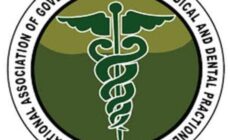In spite of the numerous provisions in the National Health Act on the need and expediency of patient safety and healthcare systems quality assurance in all the aspects and levels of healthcare delivery services and interventions in Nigeria, and notwithstanding the global declarations, policies and pronouncements by the World Health Organization and several other bodies involved in health promotion and advancement globally, the health policy makers and administrators in Nigeria, until the advent of the incumbent government and administration in the Federal Ministry of Health, paid little or no attention to the phenomena in pragmatic terms despite the huge investments in rhetoric, slogans and tomfooleries aimed at creating an apparition of seriousness. As a result, relevant interventions in terms of research; surveys and assessments, policy making; programme development, planning and implementation; monitoring and evaluation; programme reporting; global linkages for information and knowledge sharing; and accessing international technical assistance and resources for improving patient safety and healthcare systems quality assurance in our healthcare systems, either remained unborn, still-born, hibernated or in coma, even when they are well theorized and documented in some extant health documents that were mostly shelved. It is therefore not far-fetched as to why there is no credible or plausible empirical, or even anecdotal, data or evidence to establish the exact degree and magnitude of the wreckage that the Nigerian healthcare systems has suffered consequent upon the deliberate foot-dragging in implementing both the local and local policies and programmes that are meant to improve patient safety and healthcare systems quality assurance in our country, Nigeria.
As it is expected and known in all human societies, situations and sectors where an apparition, a ruse, a farce, a mockery, a sham, a pretense, a deception, a façade, a caricature, a cartoon, a distortion, and a duplicity are exchanged for truth, determination and pragmatism, incidences and adverse events and consequences always abound. In this circumstance, the adverse events and consequences are often seen in form of: surgery performed on the wrong body part; surgery performed on the wrong patient; wrong surgical procedure performed on a patient; unintended retention of foreign object in a patient after surgery or procedure; intra-operative or immediately post-operative death; patient death or serious disability associated with the use of contaminated drugs, devices, or biologics provided by the health care facility; patient death or serious disability associated with use or function of a device in patient care in which the device is used or functions other than as intended; patient death or serious disability associated with intravascular air embolism (blood vessels air trapping) that occurs while being cared for in a health care facility; infant discharged to the wrong person; patient death or serious disability associated with patient elopement; patient suicide, or attempted suicide resulting in serious disability while being cared for in a health care facility; patient death or serious disability associated with a medication error; patient death or serious disability associated with a hemolytic (blood cells breakdown) reaction due to administration of incompatible blood or blood products; maternal death or serious disability associated with labor or delivery in a low-risk pregnancy while being cared for in a health care facility; patient death or serious disability associated with hypoglycemia (low blood sugar level), the onset of which occurs while patient is cared for in a health care facility; death or serious disability associated with failure to identify and treat hyperbilirubinemia (high level of bilirubin the blood) in neonates; stage 3 or 4 pressure ulcers acquired after admission to a health care facility; patient death or serious disability due to spinal manipulative therapy; artificial insemination with the wrong donor sperm or wrong egg; patient death or serious disability associated with an electric shock while being cared for in a health care facility; incidences resulting from the use of a line designated for oxygen or other gas to be delivered to a patient but which contains the wrong gas or is contaminated by toxic substances; patient death or serious disability associated with a burn incurred from any source while being cared for in a health care facility; patient death or serious disability associated with fall or slip while cared for in a health care facility; patient death or serious disability associated with the use of restraints or bedrails while being cared for in a health care facility; care provided by someone impersonating a health care provider; abduction of a patient of any age; sexual assault on a patient within or on the grounds of a health care facility; and death or significant injury resulting from a physical assault that occurs within or on the grounds of the facility. Healthcare workers also suffer all forms of occupational hazards and injuries (including exposure to infectious organisms and dangerous agents) as well as falls, slips, Fatigue and exhaustion, Sleep deprivation, depression, etc, as a result of poor or nil patient safety and healthcare systems quality assurance culture.
That was then. The incumbent administration in the Federal Ministry of Health, under the leadership of Professor Isaac Adewole, realizing the importance, significance and urgency of patient safety and healthcare systems quality assurance in our healthcare systems, has, in consonance with the provisions in the National Health Act and the World Health Organization and several other bodies involved in health promotion and advancement globally, made an unprecedented stride in ensuring that, in all the Nigerian hospitals, the highest possible attention is given to universal safety precautions; post exposure prophylaxis; hospital infection control; injection safety; nursing procedures safety and quality assurance; medical procedures safety and quality assurance; surgical procedures safety and quality assurance; maternal, neonatal and child health safety and quality assurance; radiology/Radionuclear safety and quality assurance; medical laboratory safety and quality assurance; health equipments safety and quality assurance; healthcare waste management safety; hospital laundry safety and quality assurance; healthcare workers safety and quality assurance; food/nutrition safety and quality assurance; ambulance safety and quality assurance; pharmaceutical products safety and quality assurance; water safety and quality assurance; drips safety and quality assurance; immunization safety and quality assurance; prosthesis safety and quality assurance; dental procedures safety and quality assurance; ophthalmology procedure safety and quality assurance; physiotherapy procedures safety and quality assurance; ear, nose and throat (ENT) procedures safety and quality assurance; orthopaedic procedures safety and quality assurance; physically challenged patients procedures safety and quality assurance; mental health patients safety and quality assurance; neurological procedures safety and quality assurance; sexual and reproductive health interventions safety and quality assurance; pathological procedures safety and quality assurance; and all other healthcare interventions or programmes, even at the community level in Nigeria. Suffice it to posit, therefore, that this level of commitment to safety and quality assurance within the Nigerian healthcare systems is unprecedented and commendable. It is undoubtedly aimed at ensuring not only the full recovery of our healthcare systems but also position our healthcare systems for a leadership role on the continent of Africa, as it is meant to ensure safety and quality in healthcare delivery by ensuring that patients get the care they need; patients need the care they get; healthcare is delivered safely; healthcare is delivered on time; healthcare is patient-centred; healthcare workers perform optimally and safely; and healthcare is equitable and qualitative to all categories of patients, irrespective of the inherent inequality that is often fuelled by poverty of many patients and the lack of infrastructure to meet the needs of the disadvantaged patients.
In the contemporary world, healthcare is a great challenge to all healthcare organizers and providers in view of the wide range of patient safety and quality assurance problems worldwide, especially in the developing countries. Patient safety is now recognized as a priority for any health-care system seeking to assure and improve the quality of patient care. All patients have a right to effective, safe care at all times; hence the need for Patient Safety, which is the condition of being safe, free from danger or hazard or risk or injury and adverse effects, exemption from hurt, or loss in state of being a patient.
Globally, the health sector has now been known as a high-risk area because of adverse events, arising from treatment rather than disease, can lead to death, serious damage, complications and patient suffering. Today’s health-care context is highly complex and care is often delivered in a pressurized and fast-moving environment, involving a vast array of technology and, daily, many individual decisions and judgments by healthcare professional staff. In such circumstances, the probability of making mistakes or that things could go wrong are always there. Sometimes, unintentional harm comes to a patient during a clinical procedure or as a result of a clinical decision. Errors in the process of care can result in injury or permanent disability and sometimes death.
Patient safety is affected by inadequate information, illegible entries, lack or change of information, misinterpretations, and insufficient interoperability. Continuity of care is badly affected by the lack of shareable information among patient care providers. Major safety issues can occur during collection of patient identification data, collection of history and physical examination, request and process of investigations, diagnosis, and treatment including surgical procedures. It can also be institutional environmental, infrastructure and human errors. In every level of patient, every point in the process of specimen collection, analysis, or investigation process, care giving contributes a certain inherent lack of safety, side-effects of drugs or drug combinations, hazards posed by a medical device, substandard or faulty products entering the health service, human shortcomings, or system failures. Adverse events may therefore, result from problems in practice, products, procedures or systems.
Safety within the healthcare systems is influenced by the systems, processes and practices of the organization. For example, an organization with a poor safety culture will have limited safety systems, while an organization with a positive culture will have many systems in place to promote patient safety. The simplest definition of a health care error is a preventable adverse effect of care, whether or not it is evident or harmful to the patient. These casualties have been, in part, attributed to: human factors (variations in healthcare provider training and experience, fatigue, depression and burnout), (diverse patients, unfamiliar settings, time pressures), (failure to acknowledge the prevalence and seriousness of medical errors); medical complexity (complicated technologies, powerful drugs), (intensive care, prolonged hospital stay); system failures (poor communication, unclear lines of authority of physicians, nurses, and other care providers), (complications increase as patient to nurse staffing ratio increases), (disconnected reporting systems within a hospital: fragmented systems in which numerous hand-offs of patients results in lack of coordination and errors), (drug names that look alike or sound alike), (the impression that action is being taken by other groups within the institution), (reliance on automated systems to prevent error), (inadequate systems to share information about errors hamper analysis of contributory causes and improvement strategies), (cost-cutting measures by hospitals in response to reimbursement cutbacks), (environment and design factors. in emergencies, patient care may be rendered in areas poorly suited for safe monitoring), (infrastructure failure).
Patient safety emphasizes the reporting, analysis, and prevention of medical error that often leads to adverse healthcare events. The frequency and magnitude of avoidable adverse patient events was not well known until the 1990s, when multiple countries reported staggering numbers of patients harmed and killed by medical errors. Recognizing that healthcare errors impact 1 in every 10 patients around the world, the World Health Organization calls patient safety an endemic concern.
Patient safety is a fundamental principle of health care. Every point in the process of care-giving contains a certain degree of inherent unsafety. Adverse events may result from problems in practice, products, procedures or systems. Patient safety improvements demand a complex system-wide effort, involving a wide range of actions in performance improvement, environmental safety and risk management, including infection control, safe use of medicines, equipment safety, safe clinical practice and safe environment of care.
The risk of healthcare associated infection in some developing countries is as much as 20 times higher than in developed countries.
At any given time, 1.4 million people worldwide suffer from infections acquired in hospitals. Hand hygiene is the most essential measure for reducing health care-associated infection and the development of antimicrobial resistance.
According to WHO, At least 50% of medical equipment in developing countries (including Nigeria) is unusable or only partly usable. Often the equipment is not used due to lack of skills or commodities. As a result, diagnostic procedures or treatments cannot be performed. This leads to substandard or hazardous diagnosis or treatment that can pose a threat to the safety of patients and may result in serious injury or death. In some countries, the proportion of injections given with syringes or needles reused without sterilization is as high as 70%. This exposes millions of people to infections. Each year, unsafe injections cause 1.3 million deaths, primarily due to transmission of blood-borne pathogens such as hepatitis B virus, hepatitis C virus and HIV. The Ebola epidemic and the Lassa fever outbreak have clearly and undoubtedly worsened the statistics.
Surgery is one of the most complex health interventions to deliver. More than 100 million people require surgical treatment every year for different medical reasons. Problems associated with surgical safety in developed countries account for half of the avoidable adverse events that result in death or disability; and observatory and anecdotal evidences put the figures to be higher in the developing countries, including Nigeria.
The bold step by the Federal Ministry of Health in ensuring patient safety and healthcare quality assurance in Nigeria will help in: establishing well planned policies, standards and procedures governing the healthcare system that encompasses healthcare safety measures as a must; collaboration between healthcare providers and health professionals at enhancing patient safety at all level during the entire period of care; prioritizing patient safety as the main motto of the healthcare institutions in Nigeria; providing suitable infrastructure and required equipment for competent healthcare providers; creating leadership with research facilities exclusively for safety measures; creating a friendly situation and mechanism for preventing adverse events and reporting systems for effective prevention; developing quality and risk management units to improve quality of care including patient safety with cost containment; initiating a system that patients/relatives are made aware of safety measures in collaboration between patients/relatives and health care professionals; implementing electronic health records and necessary support system; and facilitating healthcare workers training on using of medical devices, tools and appliances.
In ensuring patient safety and healthcare services quality assurance in all the parts of Nigeria, it is important to note that healthcare policy makers and regulators should include patient-centred care as a dimension of quality in its own right in strategic and other policy documentation; patient survey tools should include a core set of items standardised at the national level (as well as in the states and the LGAs) to enable the collation and comparison of patient care experience data in key healthcare settings; patient surveys used to assess patient care experience need to include questions specifically addressing recognised patient centred care domains and assess more than patient ‘satisfaction’; implementation of healthcare funding models incorporating performance-based payments should include ‘improving patient care experience’ as an integral indicator of health service quality improvement; and improve transparency in all the healthcare delivery processes. It is therefore important for the leaders of government in the states and the LGAs (especially those heading the health ministries and departments) to take a cue from the Federal Ministry of Health.
Furthermore, at the healthcare facilities level, the chief medical directors, the medical directors and all other medical administrators must: ensure that systems are in place for the regular collection and reporting of patient care experience data through quantitative patient surveys and qualitative, narrative-based sources; ensure that organisational approaches to quality improvement include feedback about patient care experience — alongside clinical and operational data — when determining health service action plans; contribute to the evidence base for patient-centred care by recording and publishing changes in key organisational and patient outcome metrics over time; develop a shared patient-centred mission that senior leaders continually articulate to staff to promote the implementation of patient-centred care; develop and implement policies and procedures for involving patients, families and carers in their own care and, at a service level, in policy and program development, quality improvement, patient safety initiatives and healthcare design; and also ensure that the service meets the National Safety and Quality Healthcare Service Standard (as contained in the National Health Act and the WHO protocols) for service delivery to the healthcare consumers. It is also important to ensure mobilize requisite resources for patient-centred changes to care delivery, implement training strategies tailored to building the capacity of all staff to support patient-centred care; focus on work environment, work culture and satisfaction of staff as an integral strategy for improving patient-centred care; integrate accountability for the care experience of patients into staff performance review processes; and foster a culture of learning within the organisation, equally learning from successes and failures, including tragic events, to promote patient-centred care.
It has therefore become necessary that patient safety literacy; general health literacy; health care workers safety literacy; healthcare facilities hosting communities health literacy; healthcare safety and quality assurance training and capacity building; healthcare safety and quality assurance institutional strengthening for healthcare facilities; healthcare safety and quality assurance events notification for management; healthcare waste management strengthening interventions; healthcare facilities infection prevention and control interventions; healthcare safety and quality assurance operational study/research and documentation; healthcare safety and quality assurance resource mobilization; patient support on healthcare safety and quality assurance; healthcare workers support on healthcare safety and quality assurance; community support on healthcare safety and quality assurance; coordination and strengthening of multipartners healthcare safety and quality assurance interventions; inter-programmatic linkages interventions on healthcare safety and quality assurance and other health programmes; out-patients and home based care support on healthcare safety and quality assurance; healthcare workers trainees training and demonstration center on healthcare safety and quality assurance; healthcare workers in-service training and demonstration center on healthcare safety and quality assurance; global partnerships and collaboration center on healthcare safety and quality assurance; patients’ relations social support interventions; patients help groups interventions centre; inter-sectoral and multi-sectoral safety and quality assurance interventions e-health support centre for healthcare safety and quality assurance; interventions for the integration of safety and quality assurance interventions into the health programmes of networks, coalitions, civil and faith-based societies and other organizations that are involved in health programmes and activities; and healthcare safety and quality assurance commodities social distribution, be introduced or re-introduced and be fully integrated into the Nigerian healthcare systems for the singular purpose of ensuring the sustainability of the newly introduced patient safety and healthcare quality assurance programmes into our health system. This is the only way to ensure and assure patient safety and healthcare quality improvement that is slated for inauguration by the Federal Ministry of Health on the 27th of July 2017at the National Hospital Abuja in Nigeria in partnership with Patients Safety and Global Support Initiative (PSGSI) and many other local and international stakeholders.
Written by:
Dr. Oluwole Adeoye Daini
CEO, PSGSI/Africa Regional Coordinator, HESCOSDIP
Suite 144, Bolingo Hotel and Towers, CBD, FCT-ABUJA, Nigeria & No. 3, Lokoja Street, Off Ogbomoso Street, Area 8, Garki, FCT-Abuja, Nigeria.
07026921451, 08022694299, 08189301799
























